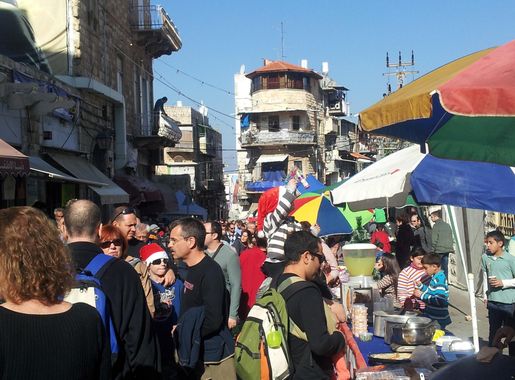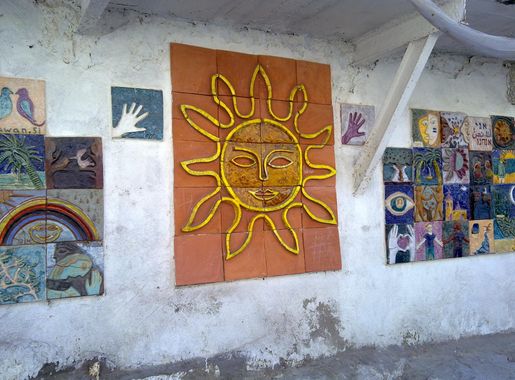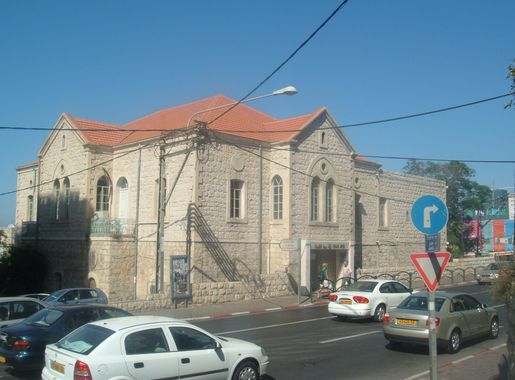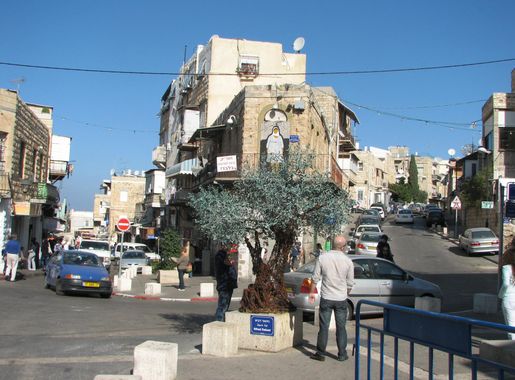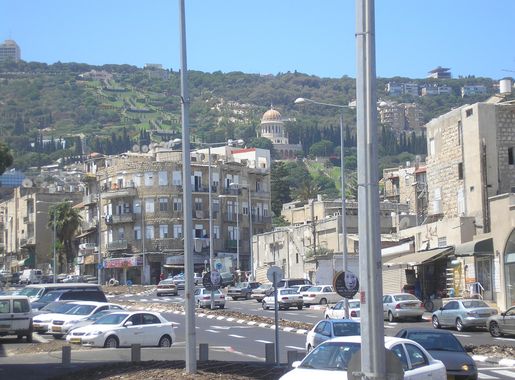
The Enchanting Streets of Wadi Nisnas
Discover Wadi Nisnas in Haifa, Israel – a cultural mosaic of vibrant markets, delicious cuisine, and captivating street art in a charming historic setting.
Wadi Nisnas is a hidden gem in the heart of Haifa, Israel, that offers a unique blend of culture, history, and vibrant local life. This charming neighbourhood is known for its narrow, winding streets lined with colorful buildings, bustling markets, and an array of street art that tells the story of its diverse community. As you stroll through Wadi Nisnas, you'll be greeted by the enticing aroma of freshly baked goods, aromatic spices, and delicious Middle Eastern cuisine wafting from local eateries. The neighborhood is a haven for food lovers, with numerous family-owned restaurants and bakeries offering traditional dishes that are sure to tantalize your taste buds. Beyond its culinary delights, Wadi Nisnas is also a cultural treasure trove. The area hosts various art galleries, craft shops, and cultural centers that celebrate the rich heritage of its residents. During the holiday season, Wadi Nisnas comes alive with festive decorations and events, making it an ideal time to experience the neighborhood's warm and welcoming spirit.
Local tips in Wadi Nisnas
- Visit on a Saturday to experience the bustling market at its peak, with fresh produce and local delicacies.
- Try the local pastries at one of the family-owned bakeries – the knafeh is a must.
- Don't miss the street art scattered throughout the neighborhood; each piece tells a unique story.
- During December, the Holiday of Holidays festival offers a unique blend of Christmas, Hanukkah, and Eid celebrations.
- Take a guided walking tour to learn about the rich history and cultural significance of Wadi Nisnas.
The Enchanting Streets of Wadi Nisnas
Wadi Nisnas is a hidden gem in the heart of Haifa, Israel, that offers a unique blend of culture, history, and vibrant local life. This charming neighbourhood is known for its narrow, winding streets lined with colorful buildings, bustling markets, and an array of street art that tells the story of its diverse community. As you stroll through Wadi Nisnas, you'll be greeted by the enticing aroma of freshly baked goods, aromatic spices, and delicious Middle Eastern cuisine wafting from local eateries. The neighborhood is a haven for food lovers, with numerous family-owned restaurants and bakeries offering traditional dishes that are sure to tantalize your taste buds. Beyond its culinary delights, Wadi Nisnas is also a cultural treasure trove. The area hosts various art galleries, craft shops, and cultural centers that celebrate the rich heritage of its residents. During the holiday season, Wadi Nisnas comes alive with festive decorations and events, making it an ideal time to experience the neighborhood's warm and welcoming spirit.
Iconic landmarks you can’t miss
Bahá’í Gardens Haifa (Bahá’í Holy Place)
Explore the breathtaking Bahá'í Gardens in Haifa, a stunning haven of serenity, beauty, and spirituality overlooking the Mediterranean Sea.
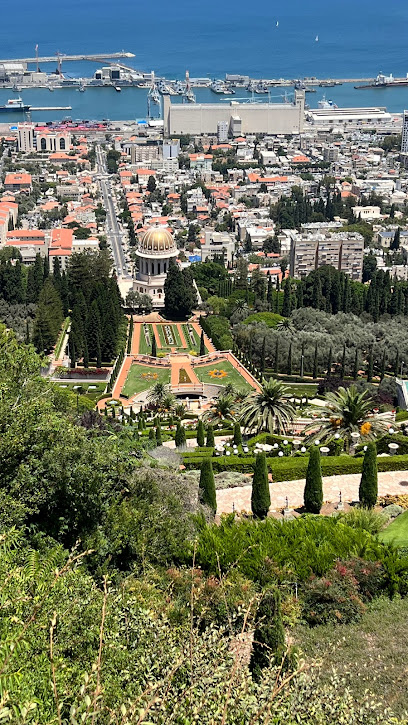
Hecht Park
Explore Hecht Park in Haifa, a serene urban oasis perfect for relaxation, picnics, and scenic walks amidst lush landscapes and beautiful views.

Stella Maris Monastery
Discover the tranquility and breathtaking views at Stella Maris Monastery, a historic site that blends spirituality with stunning Mediterranean vistas.

Paris Square
Explore the vibrant atmosphere of Paris Square in Haifa, a historical landmark blending culture, beauty, and local artistry for an unforgettable experience.

Wadi Nisnas Market
Discover the vibrant flavors and artisanal crafts of Wadi Nisnas Market, a must-visit fresh food market in Haifa, Israel, for an authentic cultural experience.
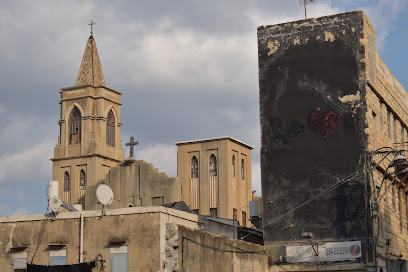
HaZkenim Falafel
Experience the authentic taste of falafel at HaZkenim Falafel in Haifa - a local favorite for delicious fast food.
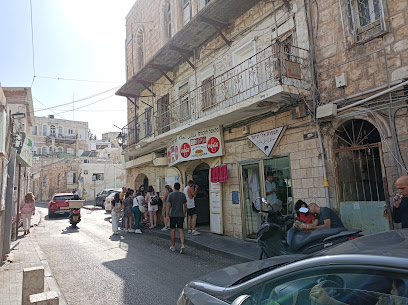
Sculptures Garden
Explore the Sculptures Garden in Haifa - a serene park blending art with breathtaking views of the Mediterranean and Galilee.

Haifa Museum of Art
Explore contemporary creativity at the Haifa Museum of Art, featuring diverse exhibitions that highlight modern Israeli and international art.
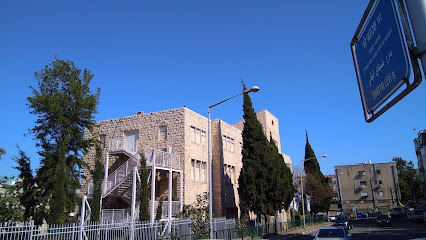
Beit Hagefen
Immerse yourself in Haifa's cultural diversity at Beit Hagefen, a vibrant center for art, community, and heritage experiences.
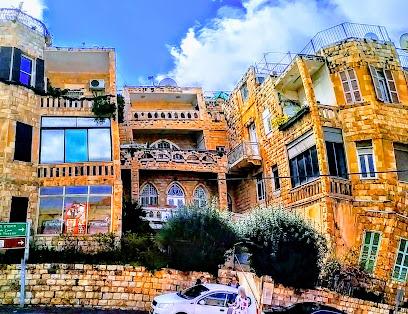
טיול בטעמים - משה אנג'ל - סיורים קולינריים
Experience the rich culinary landscape of Haifa through Taste Tour's unique gastronomic adventures and local flavors.
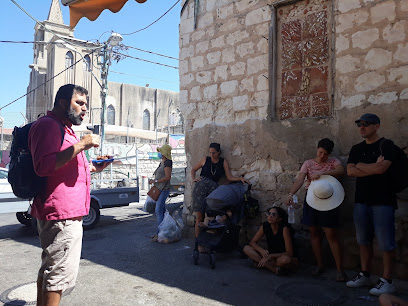
Jurayneh Mosque مسجد الجرينه حيفا
Experience the tranquility and architectural beauty of Jurayneh Mosque, a cultural gem in the heart of Haifa, Israel.
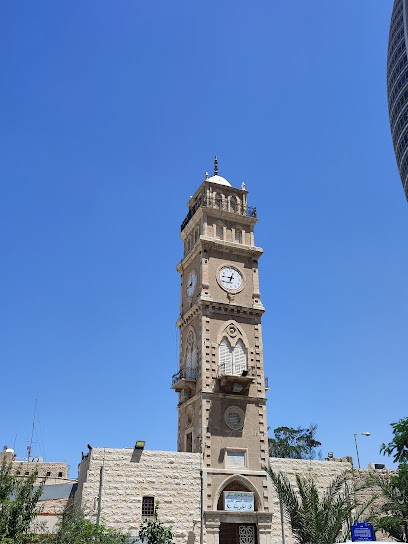
Beit Shumacher
Explore Beit Shumacher, a captivating historical landmark in Haifa, showcasing unique architecture and a rich cultural heritage.
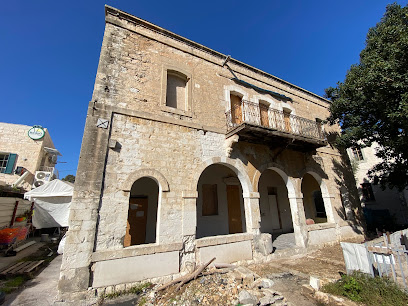
House of the Master
Explore the spiritual heart of Haifa at the House of the Master, a serene pilgrimage site rich in history and Bahá'í devotion.
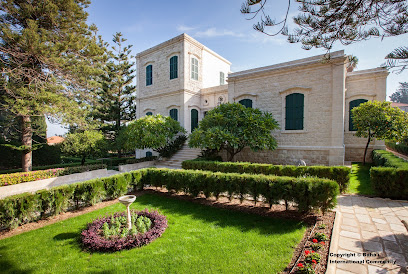
Beit Yordey Ha'yam
Discover Beit Yordey Ha'yam, a historical landmark in Haifa that showcases the maritime heritage and cultural diversity of this vibrant port city.
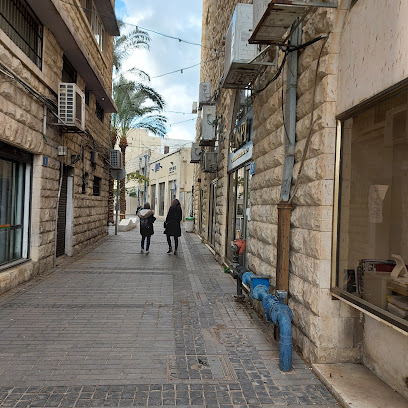
Masaryk Square
Discover the vibrant Masaryk Square in Haifa, a cultural hub filled with shops, cafes, and rich history, perfect for immersing in local life.

Unmissable attractions to see
Wadi Nisnas Market
Discover the vibrant Wadi Nisnas Market in Haifa, a fresh food haven filled with local flavors, spices, and a rich cultural experience.
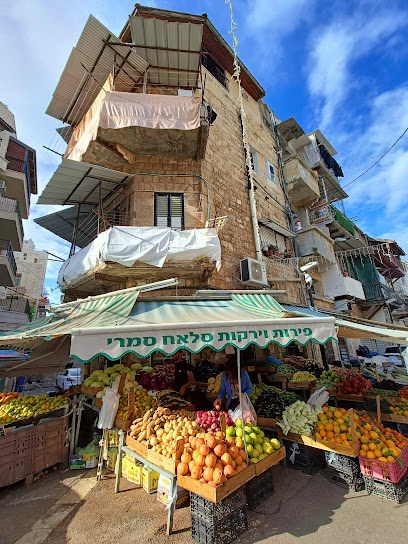
Beit Hagefen
Explore the cultural heart of Haifa at Beit Hagefen, a center dedicated to art, music, and community heritage.
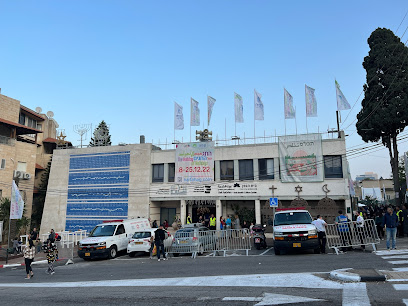
מוזיאון העיר, חיפה
Explore the rich cultural tapestry at the Haifa Museum, where art and history converge in a stunning maritime city.
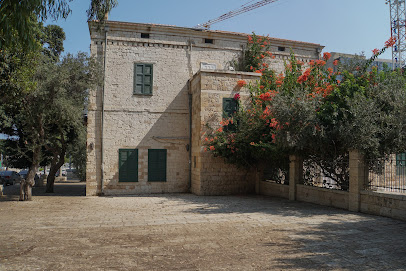
Shrine of the Báb
Discover the breathtaking beauty and spiritual significance of the Shrine of the Báb in Haifa, a UNESCO World Heritage Site on Mount Carmel.

רובע המדרגות חיפה
Explore Medraguet in Haifa: A breathtaking tourist attraction offering stunning views, rich culture, and serene nature experiences.
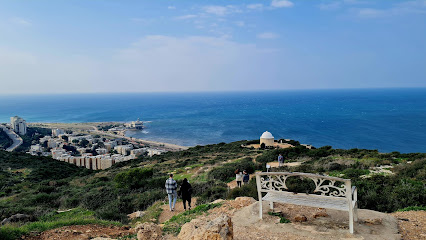
Essential places to dine
Ein ElWadi Restaurant
Discover authentic Israeli cuisine at Ein ElWadi Restaurant in Haifa - a culinary journey filled with flavor and hospitality.
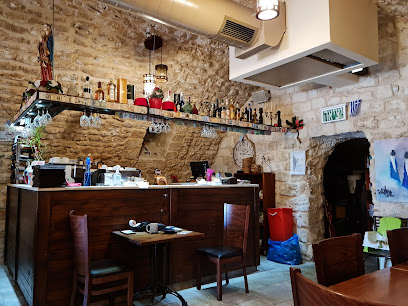
Hummus Al Sham
Experience authentic Middle Eastern cuisine at Hummus Al Sham in Haifa—home to rich flavors and welcoming atmosphere.
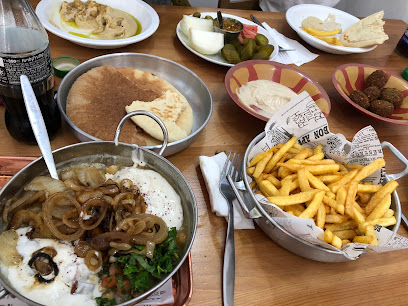
Allenby Restaurant
Discover authentic Israeli flavors at Allenby Restaurant in Haifa – where every meal is a celebration of taste and tradition.
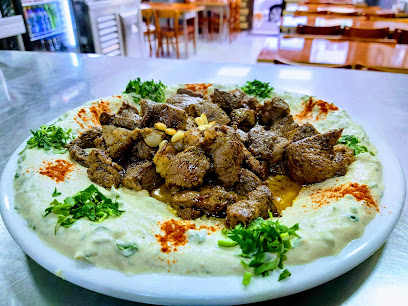
Albeit Bitak
Discover Albeit Bitak: A top-rated restaurant in Haifa offering fresh local cuisine in a warm and inviting atmosphere.
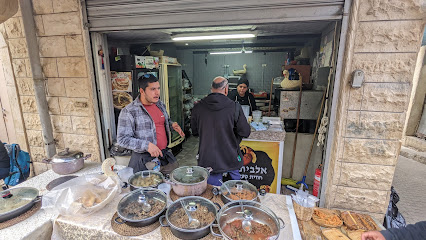
Mifgash Ha'Neviim
Discover authentic Mediterranean flavors at Mifgash Ha'Neviim in Haifa - where every meal tells a story.
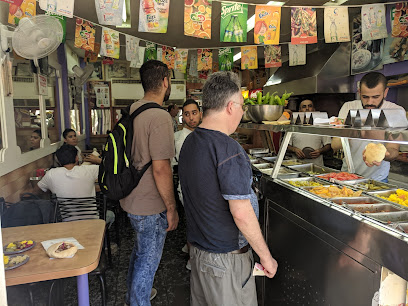
מסעדת המטבח של נוזהה
Discover the rich flavors of Haifa at The Kitchen of Nozahe - where tradition meets taste in every dish.
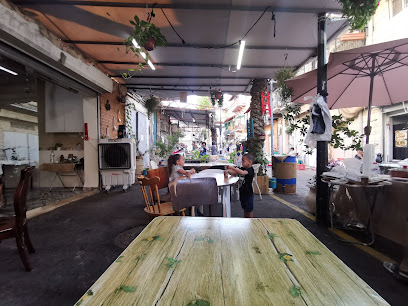
Joule
Discover Joule: A culinary treasure in Haifa offering exquisite dishes crafted from local ingredients in a welcoming atmosphere.
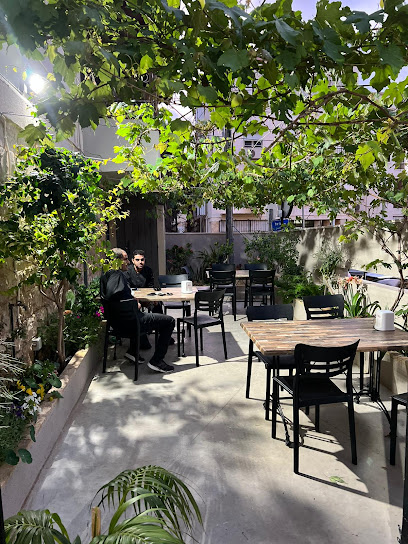
Meter Restaurant
Discover authentic Israeli cuisine at Meter Restaurant in Haifa - where local flavors meet warm hospitality.
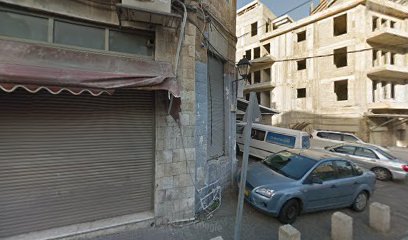
הדוכן של זיאד
Experience authentic Israeli cuisine at הדוכן של זיאד in Haifa - where every dish tells a story.
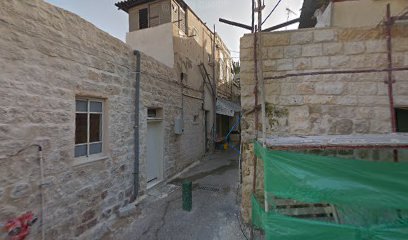
Mother's Restaurant
Experience authentic Israeli flavors at Mother's Restaurant in Haifa – a culinary haven for food lovers seeking traditional tastes.
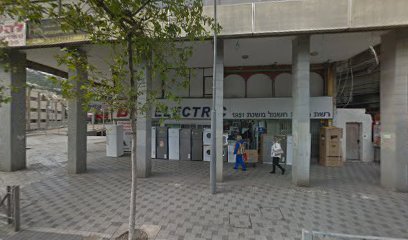
Markets, malls and hidden boutiques
Wadi Nisnas Market
Experience the vibrant flavors and rich culture at Wadi Nisnas Market, Haifa's premier fresh food destination.
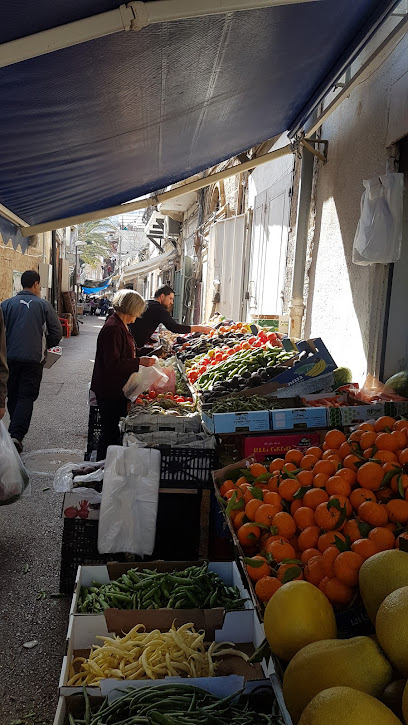
Dandasha
Discover unique second-hand treasures at Dandasha in Haifa – the perfect stop for vintage lovers and sustainability enthusiasts alike.
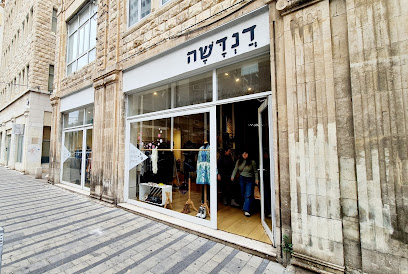
Bible Society in Israel | החברה לכתבי הקודש בישראל
Explore the Bible Society in Israel in Haifa for unique religious books, souvenirs, and a rich cultural experience that connects faith and literature.
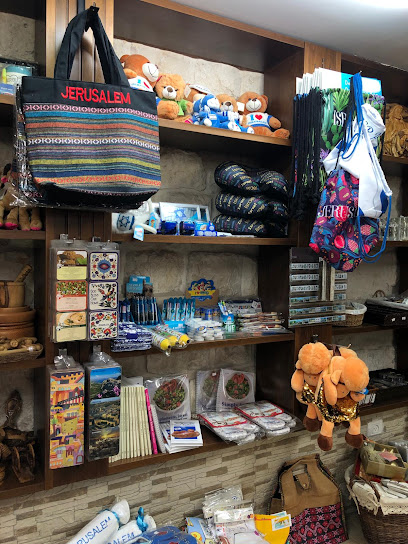
MEZACH Haifa- design station
Explore MEZACH Haifa - Design Station, your go-to gift shop for unique art prints and creative treasures in Haifa.
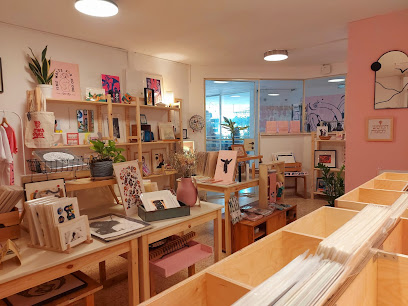
Alexander store. Coffee & Spices
Explore a world of flavors at Alexander Store in Haifa - the ultimate destination for nuts, spices, and gourmet delights.
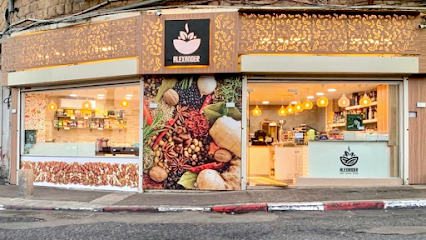
Darnah - دارنـــا
Explore Darnah in Haifa for unique handcrafted gifts capturing the essence of local culture and artistry.
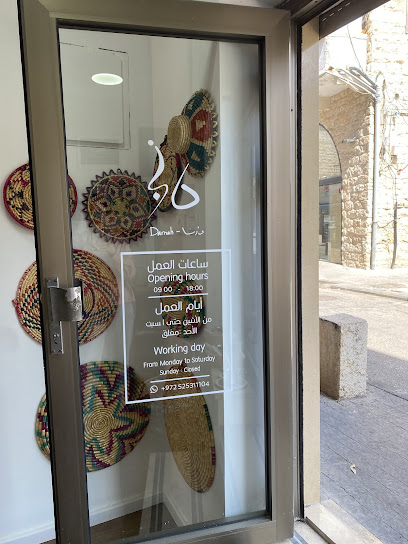
Nakkara fashion
Explore the vibrant fashion scene at Nakkara Fashion in Haifa, where unique styles meet local craftsmanship for an unforgettable shopping experience.
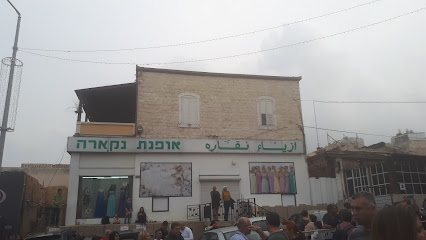
Yazan gift
Discover unique souvenirs and gifts at Yazan Gift, a charming novelty store in Haifa, perfect for capturing the essence of your travels.
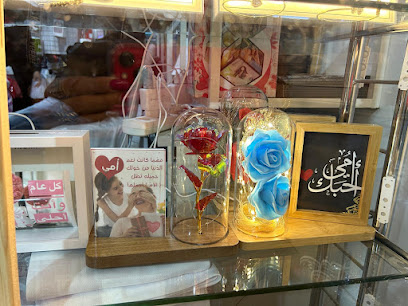
Shalah gifts
Explore Shalah Gifts in Haifa for unique souvenirs, colorful toys, and festive balloons that capture the city’s spirit.
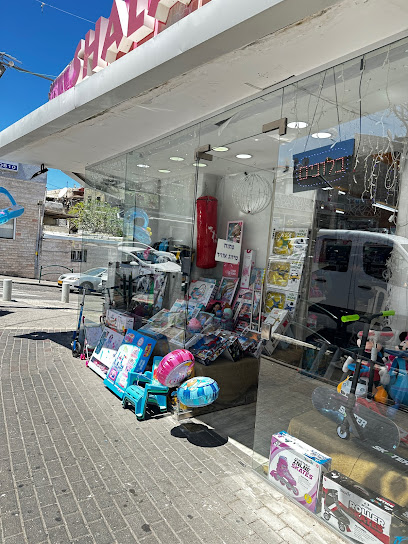
Bab El Wadi
Explore Bab El Wadi in Haifa for a delightful array of fresh fruits and vegetables, showcasing the region's rich agricultural heritage and vibrant local flavors.
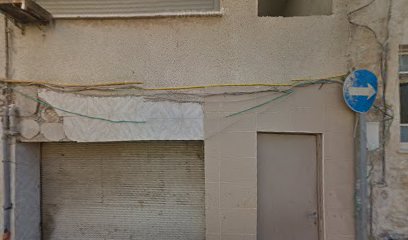
Essential bars & hidden hideouts
Iza Bar
Experience the lively nightlife at Iza Bar in Haifa, where exceptional drinks and a vibrant atmosphere await every visitor.
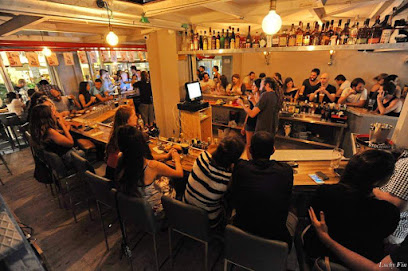
Eli's Pub-אליס פאב
Experience the lively atmosphere and delicious flavors at Eli's Pub in Haifa, where cocktails and live music create unforgettable nights.
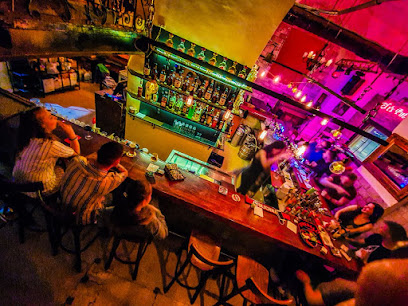
Urban Street Bar
Experience the vibrant nightlife of Haifa at Urban Street Bar, where great drinks and lively atmosphere meet.

Sababa Bar
Discover the lively atmosphere of Sababa Bar in Haifa, where amazing drinks and local culture meet for an unforgettable night out.
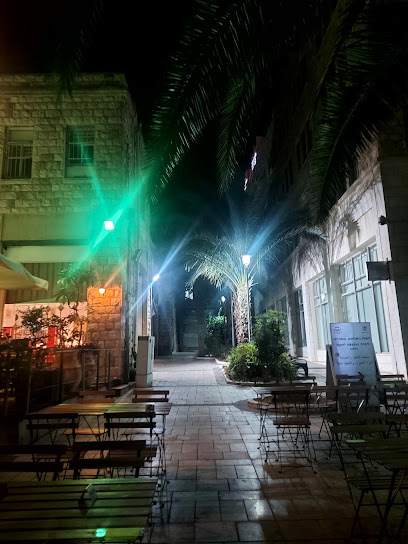
ESCOBAR
Discover the vibrant nightlife of Haifa at ESCOBAR, where great drinks, live music, and a lively atmosphere come together for an unforgettable experience.
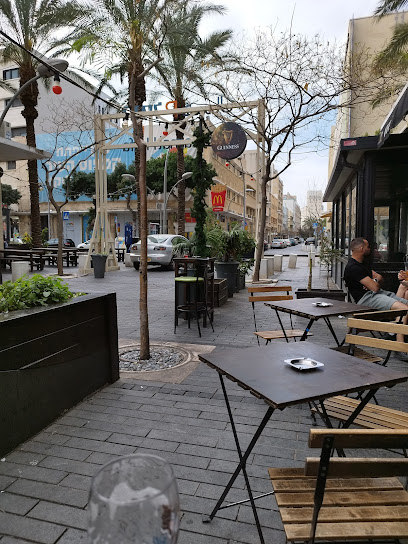
Mary bar
Discover the lively Mary Bar in Haifa, where creative cocktails, local flavors, and vibrant nightlife come together for an unforgettable experience.

Brooklyn - Bar & Kitchen
Discover the vibrant atmosphere and delicious offerings at Brooklyn Bar & Kitchen, a must-visit culinary hotspot in Haifa.

Solo bar
Experience the laid-back charm of Solo Bar in Haifa, where cozy vibes meet a diverse drink selection for a perfect nightlife escape.
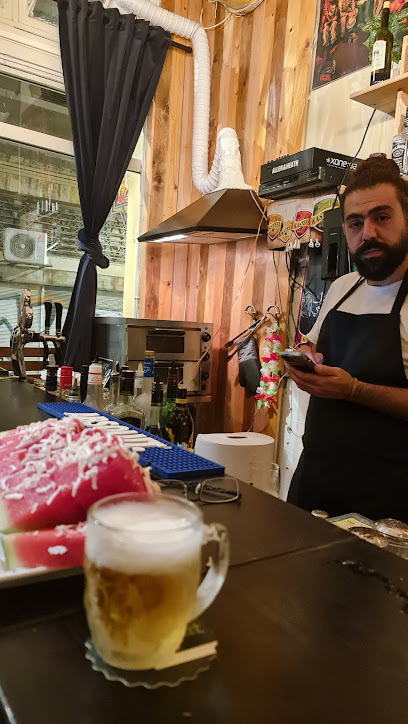
El profesor
Experience the vibrant nightlife of Haifa at El Profesor, a bar and restaurant offering delicious food and drinks in a lively atmosphere.
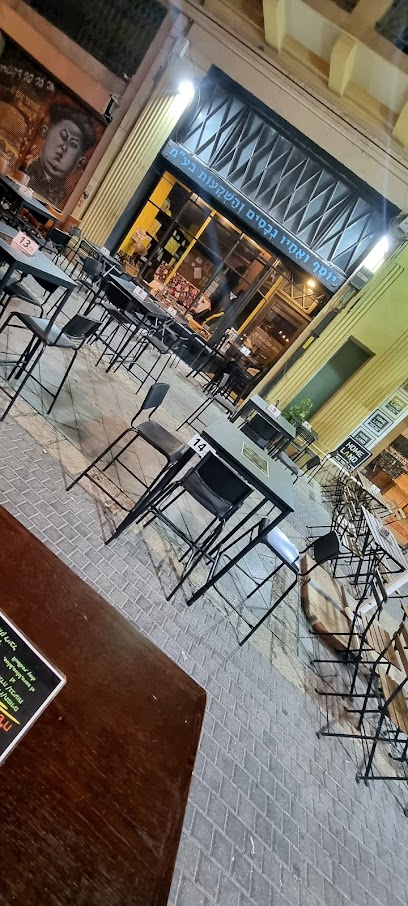
Бар
Discover the vibrant nightlife at a trendy bar in Haifa, offering exquisite drinks and a lively atmosphere perfect for unwinding after a day of exploration.
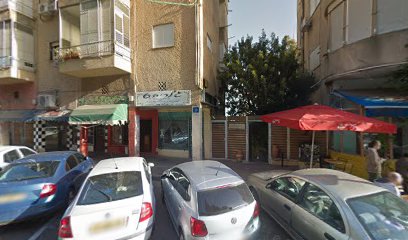
Local Phrases
-
- Helloשלום
[Shalom] - Goodbyeלהתראות
[Lehitraot] - Yesכן
[Ken] - Noלא
[Lo] - Please/You're welcomeבבקשה
[Bevakasha] - Thank youתודה
[Toda] - Excuse me/Sorryסליחה
[Slicha] - How are you?איך אתה?
[Eich Ata?] - Fine. And you?טוב. אתה?
[Tov. Ata?] - Do you speak English?אתה מדבר אנגלית?
[Ata medaber Anglit?] - I don't understandאני לא מבין
[Ani lo mevin]
- Helloשלום
-
- I'd like to see the menu, pleaseאני רוצה לראות את התפריט, בבקשה
[Ani rotsa lir'ot et hata'arich, bevakasha] - I don't eat meatאני לא אוכל בשר
[Ani lo ochel basar] - Cheers!לחיים!
[Lachaim!] - I would like to pay, pleaseאני רוצה לשלם, בבקשה
[Ani rotsa lishlem, bevakasha]
- I'd like to see the menu, pleaseאני רוצה לראות את התפריט, בבקשה
-
- Help!עזור!
[Ezor!] - Go away!לך לעבור!
[Lech la'avor!] - Call the Police!קרא למשטרה!
[Kara lemishtara!] - Call a doctor!קרא לרופא!
[Kara larofe!] - I'm lostאני אבוד
[Ani avud] - I'm illאני חולה
[Ani choleh]
- Help!עזור!
-
- I'd like to buy...אני רוצה לקנות...
[Ani rotsa liknot...] - I'm just lookingרק צופה
[Rak tzofeh] - How much is it?כמה עולה זה?
[Kama oleh ze?] - That's too expensiveזה יקר מדי
[Ze yakar midei] - Can you lower the price?אתה יכול להוריד את המחיר?
[Ata yachol lehored et hamachir?]
- I'd like to buy...אני רוצה לקנות...
-
- What time is it?מה השעה?
[Ma hasha'a?] - It's one o'clockהשעה אחת
[Hasha'aachat] - Half past (10)חצי (עשר)
[Chatzi (eser)] - Morningבוקר
[Boker] - Afternoonצהריים
[Tzohorayim] - Eveningערב
[Erev] - Yesterdayאתמול
[Etmol] - Todayהיום
[Hayom] - Tomorrowמחר
[Mahar] - 1אחד
[Echad] - 2שניים
[Shnayim] - 3שלושה
[Shlosha] - 4ארבעה
[Arba'a] - 5חמישה
[Chamisha] - 6שישה
[Shisha] - 7שבעה
[Shiv'a] - 8שמונה
[Shmoneh] - 9תשעה
[Tish'a] - 10עשרה
[Eser]
- What time is it?מה השעה?
-
- Where's a/the...?איפה נמצא...
[Eifo nimtza...] - What's the address?מה הכתובת?
[Ma haktovet?] - Can you show me (on the map)?אתה יכול להראות לי (על המפה)?
[Ata yachol leharot li (al hamapa)?] - When's the next (bus)?מתי האוטובוס הבא?
[Matay haotobus haba?] - A ticket (to ....)כרטיס (ל...)
[Kartis (le...)]
- Where's a/the...?איפה נמצא...
History of Wadi Nisnas
-
Wadi Nisnas, nestled between the slopes of Mount Carmel and the Mediterranean Sea, flourished during the Ottoman Empire (1517-1917). This period saw the establishment of a vibrant community, primarily composed of Arab Christians and Jews. The neighbourhood became known for its narrow winding streets and traditional architecture, with many buildings featuring characteristic Ottoman-style arches and balconies.
-
The British Mandate (1920-1948) brought significant changes to Wadi Nisnas. The neighbourhood became a focal point of cultural and social activity, with the establishment of various institutions and organizations that promoted Arab culture and education. This era also saw the rise of political tensions in the region, which began to reshape the community's demographics and social fabric.
-
The events surrounding the 1948 Arab-Israeli War had a profound effect on Wadi Nisnas. As Haifa became a battleground, many residents were displaced, and the neighbourhood experienced significant changes in its population. The war marked a turning point in the area's history, with new demographics and cultural shifts taking place in the aftermath.
-
In the late 20th century, Wadi Nisnas began to experience a cultural revival. Numerous initiatives were launched to preserve its rich heritage and promote tourism. The neighbourhood's unique blend of Arab and Jewish cultures was celebrated through festivals, art exhibitions, and community events, showcasing the region's diverse history.
-
Today, Wadi Nisnas is recognized for its cultural significance and historical importance within Haifa. The neighbourhood is home to a vibrant arts scene and is known for its local markets, traditional eateries, and community spirit. Efforts to maintain its historical architecture and promote intercultural dialogue continue to shape Wadi Nisnas as a model of coexistence in modern Israel.
Wadi Nisnas Essentials
-
Wadi Nisnas is easily accessible from various neighborhoods in Haifa. If you're coming from the Carmel Center, you can take bus number 24 or 37, which will drop you off near the entrance of Wadi Nisnas. From the Haifa Bat Galim area, bus number 7 connects you directly to the neighborhood. Alternatively, taxis and rideshare services are widely available throughout Haifa, offering a convenient option to reach Wadi Nisnas directly.
-
Wadi Nisnas is a compact neighborhood, making it easy to explore on foot. The narrow streets are lined with vibrant street art and local shops, best appreciated at a leisurely pace. For longer distances, Haifa's public transport system, including buses and the Carmelit funicular, can be used to connect to other areas. Bicycles can be rented from local shops, though be cautious as the streets can be steep.
-
Wadi Nisnas is generally a safe area for tourists, but standard precautions should always be taken. Avoid wandering alone at night, especially in poorly lit areas. While there are no specific high-crime areas targeting tourists, it is advised to stay vigilant in crowded places, especially markets, where petty theft can occur.
-
In case of emergency, dial 100 for police, 101 for medical emergencies, and 102 for fire services. Local hospitals, such as Rambam Health Care Campus, are equipped to handle emergencies. It's wise to have travel insurance that covers medical emergencies. For minor health issues, pharmacies are readily available throughout Haifa.
-
Fashion: Do dress modestly, especially when visiting religious sites, and avoid overly revealing clothing. Religion: Do respect local customs and traditions; take care to dress appropriately when entering places of worship. Public Transport: Do be respectful to others, and offer your seat to the elderly or disabled; don't eat or drink on public transport. Greetings: Do greet locals with a smile and a friendly 'Shalom'; don't initiate physical contact unless reciprocated. Eating & Drinking: Do try local foods and accept invitations to share meals; don't waste food, as it's considered disrespectful.
-
To experience Wadi Nisnas like a local, visit the vibrant market on Saturdays where you can find fresh produce, spices, and traditional foods. Engage with local artisans and try to learn a few phrases in Arabic or Hebrew, which will be appreciated by the residents. Don't miss the street art that adorns many of the walls; consider taking a guided walking tour to fully appreciate the history and culture of the area.
Trending Landmarks in Wadi Nisnas
-
Bahá’í Gardens Haifa (Bahá’í Holy Place)
-
Hecht Park
-
Stella Maris Monastery
-
Paris Square
-
Wadi Nisnas Market
-
HaZkenim Falafel
-
Sculptures Garden
-
Haifa Museum of Art
-
Beit Hagefen
-
טיול בטעמים - משה אנג'ל - סיורים קולינריים
-
Jurayneh Mosque مسجد الجرينه حيفا
-
Beit Shumacher
-
House of the Master
-
Beit Yordey Ha'yam
-
Masaryk Square
Nearby Cities to Wadi Nisnas
-
Things To Do in Akko
-
Things To Do in Acre
-
Things To Do in Nahariya
-
Things To Do in Zikhron Ya'akov
-
Things To Do in Nazareth
-
Things To Do in Rosh HaNikra
-
Things To Do in Caesarea
-
Things To Do in Hadera
-
Things To Do in Safed
-
Things To Do in Tiberias
-
Things To Do in Tyre
-
Things To Do in Netanya
-
Things To Do in Beit She'an
-
Things To Do in Umm Qais
-
Things To Do in Ra'anana

